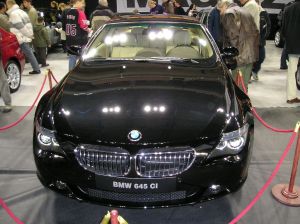Hello again,
It was a tumultuous 2015 that we just bid adieu to while simultaneously ushering in 2016 with considerable hope and an eerie dash of cautious optimism. Economic trends are apparently coming to full boil this year as geopolitics take center stage.
Crystal ball gazing
Crude oil prices do not appear to be bottoming out even at $30/barrel. The jury is still out whether it could hit $20 as also an outlandish $10 – the bigwigs in investment banking have their own theories and logic to back their assessment. Economists are divided in their opinion and there are several schools of thought -ranging from being overly optimistic to downright pessimism. The Cassandras, no doubt are having a field day. Whether the glass is half full or half empty is in the eye of the beholder.
The fact remains that any amount of crystal ball gazing at this juncture would probably only intensify the fuzzy picture. Going with the flow appears to be logical.
Slow and sure rebound
In early January, the World Bank made a downward revision to the global growth forecast for 2016 to 2.9% (from the 3.3% forecast in June 2015) due to economic headwinds. China is expected to grow at 6.7%. U.S. growth projection has been trimmed to 2.7%. The EU’s (European Union) major economies like France, Germany and the UK could witness growth rate of 1% [Market Realist]. For the Eurozone’s 19-member economies as a whole, the GDP growth is forecast at 1.5%. The world economy grew 2.4% in 2015 – less than the 2.8% projected forecast and slower than the 2.6% expansion in 2014 [Bloomberg Business]. In spite of news of growth of the U.S. economy, it is somewhat of a paradox that its manufacturing sector shrank for the second straight month in December 2015 with the industry’s key index ISM hitting 48.2% – the lowest since June 2009, and falling below the 50% threshold for the sixth consecutive month [CNN Money]. The strength of the U.S. dollar in the wake of dipping crude oil prices currently adds to the woe of America’s manufacturing.
Nevertheless, it is the U.S. and UK that are expected to lead global growth in 2016.
Fast and furious growth
North America and Western Europe were the key drivers of the improvement in global car sales in 2015 with volumes advancing 7% – the strongest gain in nearly two decades [Scotia Bank]. Little wonder that the thrust on lightweighting and cycle time reduction continues unabated in this sector. A new press-forming technology for the fast and efficient production of thermoplastic composite components for both the automotive and aerospace sectors combines, compacts, processes and melds plastic, glass and composite materials far more efficiently and with greater precision than can be achieved with conventional injection and compression molding processes. A novelty of sophistication in compression molding is reportedly possible by integrating active thermal management technologies into the mold face by enabling heating and cooling levels to be continuously adapted for each mold area and process stage, in real-time [Plastics Today]. Composite components can be rapidly formed using a one-shot stamp-forming process by dynamically controlling the heat applied to each mold area and achieving one minute Takt time (average time between start of production of one unit and start of production of the next unit).
Improvements abound
A new grade of Polyethersulfone resin from Solvay improves the toughness, heat resistance and processing consistency of a carbon fiber reinforced thermoset resin prepreg. The resin reportedly increases the impact strength of thermoset composites by nearly 40% and provides a step-change improvement in heat resistance. The polyethersulfone micropowder is compatible with a range of epoxy resin systems and disperses rapidly, thereby improving processability and consistency in high-volume composite production [Plastics Today]. Apart from being widely used in commercial and military aircraft applications, the resin also has potential in the automotive market segment.
In spite of gasoline costs being at an all-time low thanks to depressed crude oil prices, the focus on environmentally-friendly technologies such as hydrogen powered fuel cell vehicles has seen an upward trend with a spate of announcements from leading auto producers close on the heels of Toyota’s Mirai. Considering that water vapor is the sole emission, fuel cell technology has been touted as the future with Japan and Europe taking the lead in creating the requisite infrastructure (read fueling stations) to popularize the hydrogen-powered vehicles. Hyundai’s hydrogen-powered crossover concept car has a CFRP chassis made of molded parts by vacuum assisted resin transfer molding (VARTM) using acrylic thermoset infusion resin. The 3D beam design combines woven carbon fiber braided tubing around a low density polyethylene preform that foams and expands during infusion. The patented design and process can be used to form both straight and curved components to create complex-shaped assembled structures [Plastics Today]. The CFRP components of the chassis and frame are robotically bonded with a structural adhesive, sans mechanical fixtures. The composite chassis rivals steel in strength and stiffness with a 60% weight saving to boot, whilst also meeting crash safety standards.
Blowing strong – en core in 2016
Advancements in technology and improvements in operational efficiency have resulted in the average purchase price for wind power in the U.S. falling to an all-time unthinkable low of 2.35 cents/KWh according to the U.S. Energy Department [The Telegraph]. At this level , wind competes with coal or gas even without a carbon tax. A study by Bloomberg New Energy Finance shows that the global average for “levelized cost of electricity” (LCOE) for onshore wind fell to $83/MWh last year compared to $76-$82 for gas turbine plants in the U.S. or $85-$93 in Asia or $103-$118 in Europe. While the official numbers are awaited, global wind power installations were anticipated to reach 63.7GW in 2015 – up 30% from 2014. Vestas, Gamesa and Nordex, three of Europe’s publicly traded wind turbine-makers, all doubled in value in 2015 after record industry installations [Bloomberg Business]. Fiber reinforcements and resins have also played a major role in blade technology enhancements that have led to a progressive increase in unit turbine capacity (MW) and blade length over the years without sacrificing performance.
GFRP and CFRP composites are the principal gainers when it comes to onshore and offshore wind energy.
Leading from the front
BMW has been in the forefront when it comes to use of CFRP in automobiles. It has commenced using water assist for its HP-RTM processing of the curved section of the CFRP roof carrier of the new BMW 7 series. The water assist technology equipment from Maximator GmbH consists of a water treatment unit and a pressure unit [Plastics News]. The special water injector with multiple integrated monolithic valves is larger and heavier than injectors conventionally used with water assist injection molding. The earlier version of the component had a foam core with carbon fiber braiding applied prior to impregnation by epoxy resin. In the new water assist version, a plastic tube replaces the foam core and is held under water pressure. The water is removed only after the resin has cured in a HP-RTM compression mold. The high temperature utilized in the HP-RTM process coupled with use of pure demineralized water and specific metal alloys prevents incidence of corrosion. The hastened curing process and consequent reduction in cycle time was achieved by heating the water.
Another success story of a collaborative effort between press manufacturer, toolmaker and epoxy resin producer.
Riding (past) the rough tide
There was news to cheer about in the marine sector where glass fiber (GFRP) is used extensively in a variety of boats. According to the National Marine Manufacturers Association (NMMA), powerboat sales were up by 8% in 2015 with a 6-8% growth forecast for 2016. The reasons attributed to this growth are a steadily improving economy and several product innovations. Most powerboat segments experienced growth through Q2 2015 (compared to the same period in 2014). Jet boats were up 18.1%, wake sports boats up 12.1%, deck boats up 11.3%, personal watercraft up 8.2%, pontoon boats up 6.6% and bass boats up 5.3%. Other GFRP outboard boats (including center console boats, sport fishing boats and flat boats) were up 11.1% [IBI Plus International Boat Industry].
With the number of powerboat sales back to pre-recession levels, is it a case of “happy days are here again” for the marine sector?
Composites challenge metals
It is a known fact that the Airbus A350-900 utilizes composites for the wings and fuselage frames. The quest to save weight in aircrafts is perennial. Carbon fiber reinforced PEEK has been used to replace aluminum in a fitting for the aircraft door of the A350-900. The injection molded component has received regulatory approval and entered serial production. Substitution of metal with composites results in brackets that are 40% lighter and equally less expensive in production [Plastics News]. The composite structure uses an outer skin along with a bracing structure on the inside. The reinforced PEEK bracket connects the outer skin to points on the internal bracing structure. The two components form a box-like structure to exploit the maximum geometrical moment of inertia (MI). Whereas aluminum requires a special coating to prevent corrosion, the reinforced PEEK withstands moisture that accumulates inside aircraft doors. In addition, the composite has up to 100 times longer fatigue life and up to 20% greater specific strength and stiffness compared to aluminum under the same conditions.
In my September 2015 post, I had mentioned the live-and-let-live motto of the automobile industry being the future norm when it comes to using a combination of materials. The BMW 7 Series boasts of the first ever volume-production automobile using a CFRP composite, aluminum and super-high-strength steel to increase the rigidity and stiffness in the passenger cell, whilst simultaneously reducing vehicle weight [Plastics Today]. The carbon fiber core body with hood and doors in aluminum results in a weight saving of 130kg. The design enables a 50:50 axle load distribution and also allows the lowering of the center of gravity.
Walking the (green) talk
Since 2012, there has been a tectonic shift when it comes to embracing renewable energy and recycling. Global awareness of the ills of fossil fuel and ocean waste has been on the increase and the clamor for taking action has gone up several decibels, with Fortune 500 companies walking the talk when it comes to practical implementation on this aspect. Adidas launched a new concept shoe in Q4, 2015 made with ocean plastic waste and nets typically used to catch fish. The concept shoe consists of an upper section made with ocean plastic content and a midsole which is 3-D printed using recycled polyester and gill net content [Plastics News]. In June 2015, Adidas had introduced a shoe made almost entirely from recycled ocean waste.
Impossible is nothing – Adidas lives up to its slogan.
The show must go on
Global trade headed south in 2015 with most countries witnessing a dip in exports. Amidst the uncertainty, what stands out is the the continued emphasis on product development and collaborative efforts on the part of organizations in the multi-pronged approach to lightweighting solutions in composites in the automotive, aerospace and renewable energy sectors.
With wind energy poised to enjoy an equally good outing in 2016 (as in 2015), this sector along with automotive and aerospace is expected to drive composites usage this year. Global car sales are again expected to strengthen this year before tapering off in 2017. Demand for multi-axial fabrics in onshore/offshore wind and marine market segments along with prepregs for aerospace coupled with LFRT (and chopped fibers) for automotive will keep the reinforcements (glass and carbon) market afloat this year in spite of economic headwinds.
Mergers and acquisitions will figure prominently in 2016 as the industry consolidates – a natural corollary in times of economic turmoil and when the “survival of the fittest” (in the business sense) adage is at play.
Its all for the greater good, in the ultimate analysis?
Till the next post,
Cheers,
Twitter: @essjaycomposite
Website: www.essjaycomposites.com










You must be logged in to post a comment.